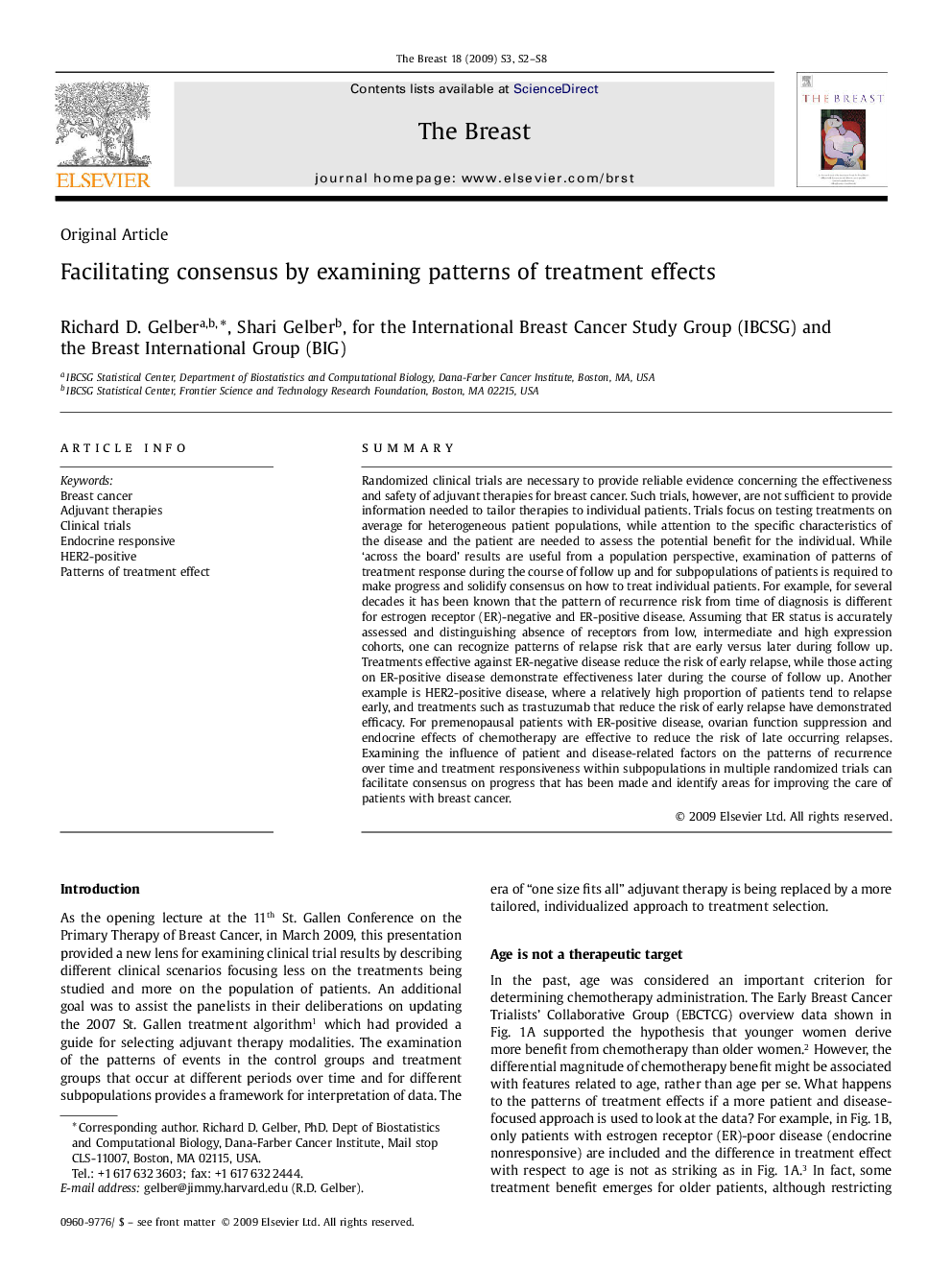| Article ID | Journal | Published Year | Pages | File Type |
|---|---|---|---|---|
| 3909434 | The Breast | 2009 | 7 Pages |
SummaryRandomized clinical trials are necessary to provide reliable evidence concerning the effectiveness and safety of adjuvant therapies for breast cancer. Such trials, however, are not sufficient to provide information needed to tailor therapies to individual patients. Trials focus on testing treatments on average for heterogeneous patient populations, while attention to the specific characteristics of the disease and the patient are needed to assess the potential benefit for the individual. While ‘across the board’ results are useful from a population perspective, examination of patterns of treatment response during the course of follow up and for subpopulations of patients is required to make progress and solidify consensus on how to treat individual patients. For example, for several decades it has been known that the pattern of recurrence risk from time of diagnosis is different for estrogen receptor (ER)-negative and ER-positive disease. Assuming that ER status is accurately assessed and distinguishing absence of receptors from low, intermediate and high expression cohorts, one can recognize patterns of relapse risk that are early versus later during follow up. Treatments effective against ER-negative disease reduce the risk of early relapse, while those acting on ER-positive disease demonstrate effectiveness later during the course of follow up. Another example is HER2-positive disease, where a relatively high proportion of patients tend to relapse early, and treatments such as trastuzumab that reduce the risk of early relapse have demonstrated efficacy. For premenopausal patients with ER-positive disease, ovarian function suppression and endocrine effects of chemotherapy are effective to reduce the risk of late occurring relapses. Examining the influence of patient and disease-related factors on the patterns of recurrence over time and treatment responsiveness within subpopulations in multiple randomized trials can facilitate consensus on progress that has been made and identify areas for improving the care of patients with breast cancer.
